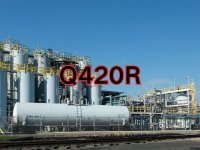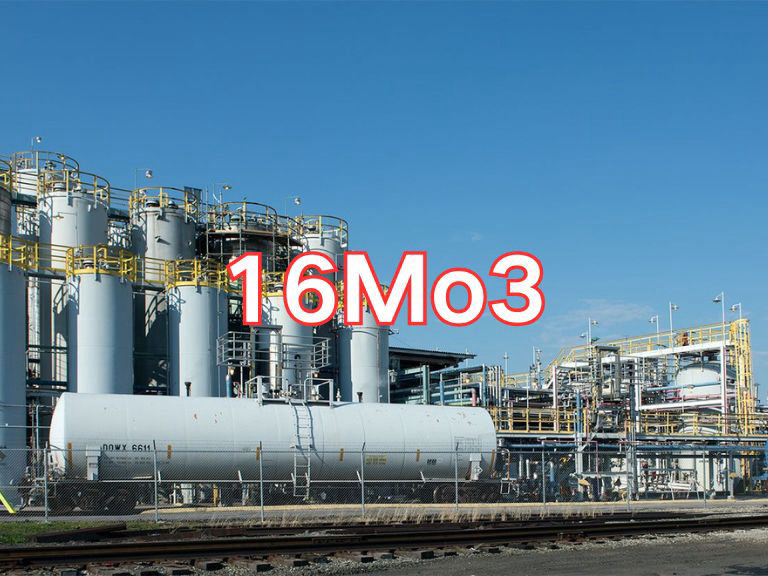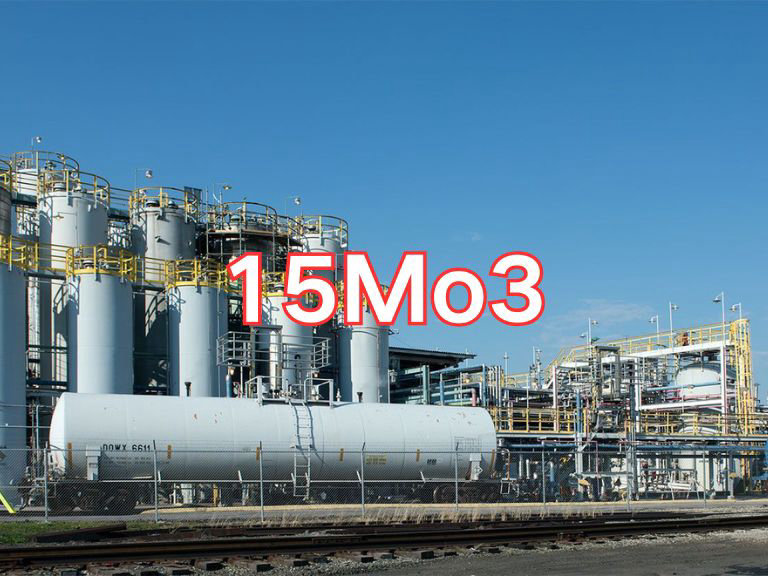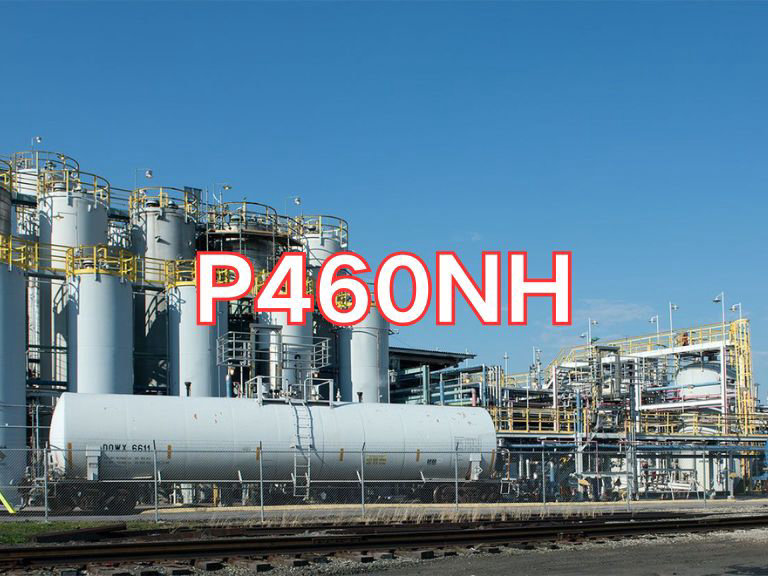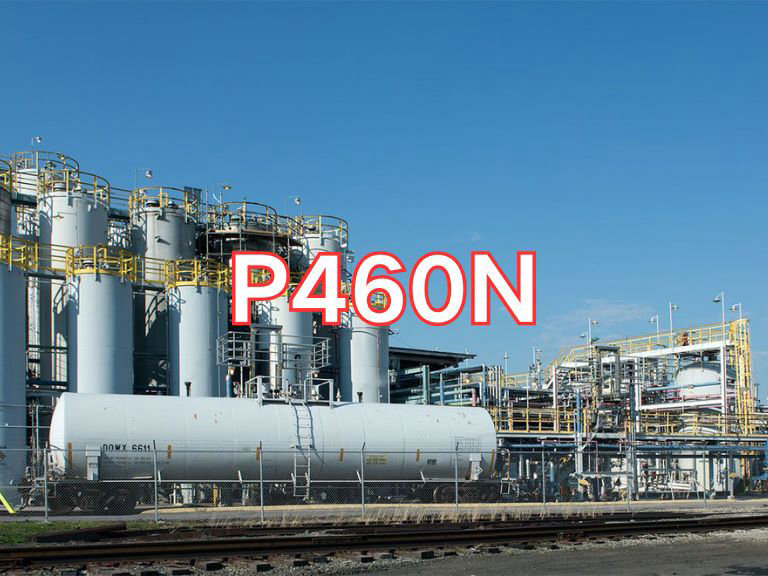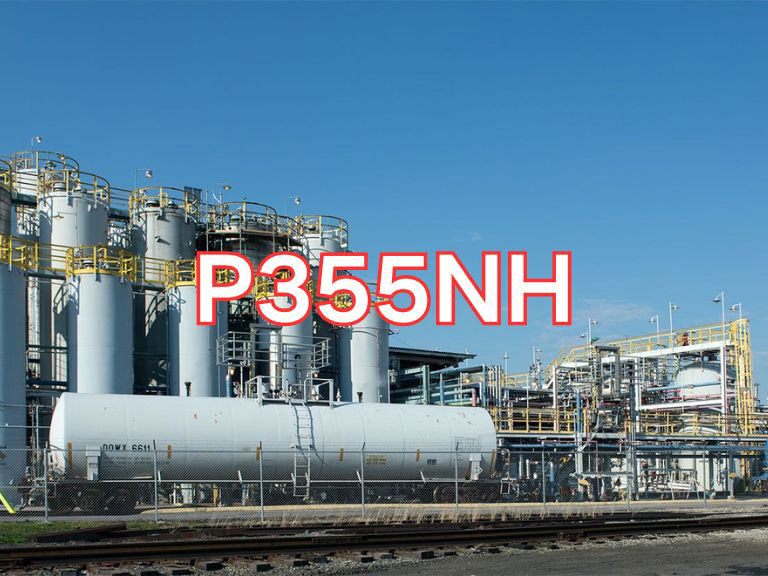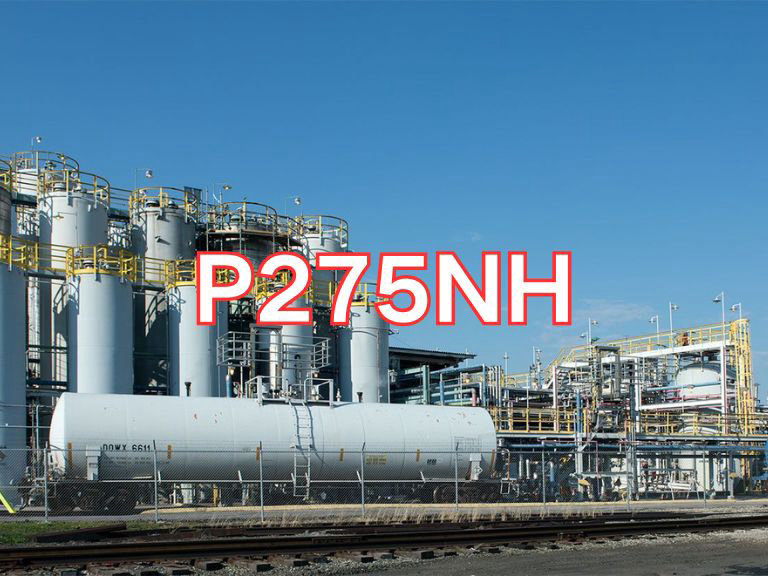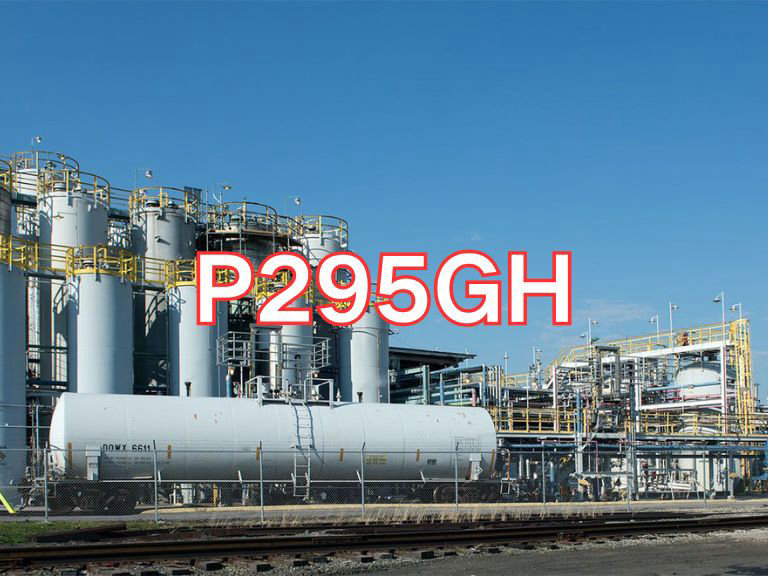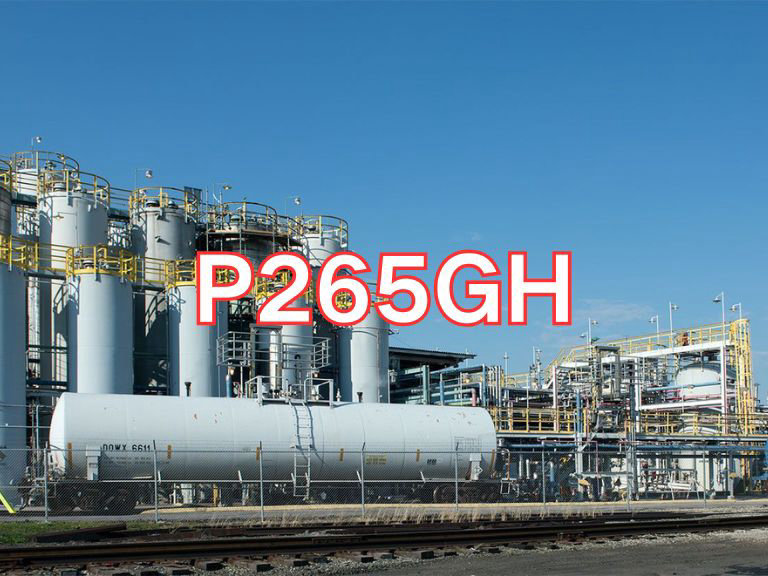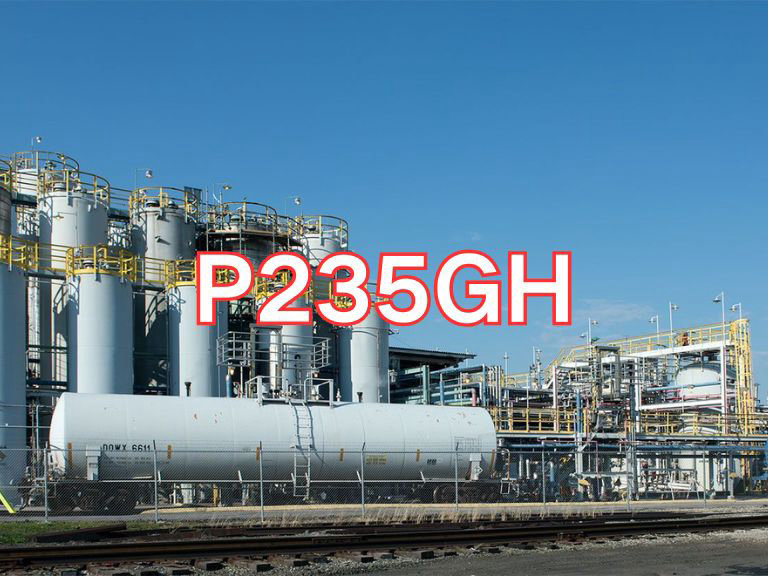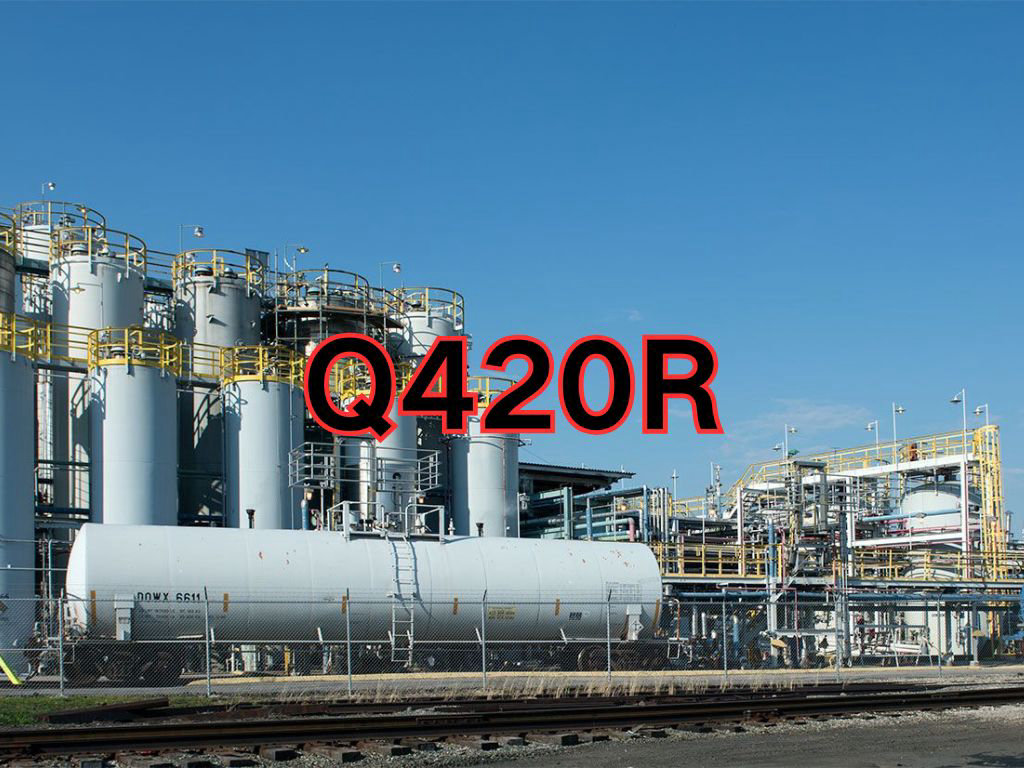

Q420R
1. Brief Introduction
Q420R is a high-strength and high-toughness steel plate for pressure vessels, manufactured in accordance with the GB 713 standard. It has a minimum yield strength of 420 MPa and exhibits excellent low-temperature toughness, weldability, and formability. The fine-grained microstructure is achieved through microalloying and quenching & tempering (Q+T) heat treatment. It is widely used in the fabrication of high-pressure, thick-walled pressure vessels, particularly heavy-duty equipment operating in low-temperature environments.
2. Grade Designation
- Q: Stands for "Qu", the first letter of the Chinese pinyin for "Yield Strength"
- 420: Minimum yield strength value in MPa when thickness ≤16 mm
- R: Stands for "Rong" , the first letter of the Chinese pinyin for "Pressure Vessel"
3. Physical Properties
- Density: 7.85 g/cm³
- Elastic Modulus: 210 GPa
- Poisson’s Ratio: 0.3
- Coefficient of Thermal Expansion: 12.0×10⁻⁶/℃
- Thermal Conductivity: 45.0 W/(m·K)
- Specific Heat Capacity: 0.47 kJ/(kg·K)
4. Chemical Composition (Heat Analysis, %)
- C ≤ 0.18
- Si 0.15–0.50
- Mn 1.20–1.60
- P ≤0.020
- S ≤0.015
- Nb/V/Ti Microalloying elements
- Alt ≥0.020
Key Features:
- Low carbon equivalent design (Ceq ≤ 0.48), resulting in low susceptibility to cold cracking during welding
- Precipitation strengthening achieved by microalloying elements such as Nb, V, and Ti
- Ultra-low phosphorus and sulfur content (P ≤ 0.020%, S ≤ 0.015%)
- Guaranteed impact toughness at -20°C
5. Application Areas
- Petrochemical Industry: Large hydroprocessing reactors, coal liquefaction reactors
- Energy Equipment: Third-generation nuclear reactor pressure vessels, large hydropower penstocks
- Gas Storage & Transportation: Cryogenic storage tanks (-40°C), large spherical tanks
- Heavy Machinery: Thick-walled pressure vessels, large high-pressure autoclaves
6. Testing and Manufacturing Methods
Production Process:
- Electric furnace melting → LF refining → VD vacuum degassing
- Controlled rolling and controlled cooling (TMCP) or Quenching & Tempering (Q+T)
- 100% ultrasonic testing (UT) per plate
Mechanical Requirements:
Tensile Properties:
- Rp₀.₂ ≥ 420 MPa
- Rm: 550–710 MPa
- Impact Toughness: KV₂ ≥ 47 J at -20°C
- Bend Test: 180° bending (d = 3a), no cracks
- Through-thickness (Z-direction) Properties: Optional Z15 to Z35 grades
7. Corresponding International Grades
| Standard System | Equivalent Grade | Standard Number |
|---|---|---|
| USA (ASME) | SA-737 Gr.C | ASTM A737/A737M |
| Europe (EN) | P460NL2 | EN 10028-3 |
| Japan (JIS) | SPV490 | JIS G 3115 |
| International (ISO) | P460NL2 | ISO 9328-3 |
Note: Q420R will be superseded by Q415R under the new standard GB 713-2023 starting in 2025. The new grade features revised chemical composition and mechanical property requirements. Users should verify the applicable standard version when selecting material.
Q420R v.s. Q420DR
Q420R and Q420DR are both high-strength steel plates for pressure vessels, with similar yield strength (≥420 MPa). However, they differ significantly in applicable standards, service environments, low-temperature toughness, chemical composition control, and application scenarios. Below is a detailed comparison.
1. Grade Designation Comparison
| Item | Q420R | Q420DR |
|---|---|---|
| Q | First letter of "Qu" , pinyin for "Yield Strength" | Same |
| 420 | Minimum yield strength: 420 MPa | Minimum yield strength: 420 MPa |
| R / DR | "Rong" , pinyin for "Vessel" | "Di" + "Rong": Low-Temperature Vessel |
| Meaning | General-purpose pressure vessel steel | Low-temperature pressure vessel steel |
Key Difference:
R: Standard pressure vessel use
DR: Specifically indicates suitability for low-temperature applications
2. Applicable Standards
| Item | Q420R | Q420DR |
|---|---|---|
| Standard | GB 713-2014 (to be replaced by GB 713-2023) | GB/T 713.3-2023 (implemented March 2024) |
| Category | General pressure vessel plate standard | New dedicated standard for low-temperature pressure vessels |
Note: Under the new GB 713-2023, Q420R will be replaced by Q415R. Q420DR is a new grade introduced in GB/T 713.3-2023, representing a technical upgrade.
3. Low-Temperature Impact Toughness (Core Difference)
This is the most critical technical distinction.
| Item | Q420R | Q420DR |
|---|---|---|
| Impact Test Temperature | -20°C | -40°C |
| Impact Energy Requirement (KV₂, longitudinal) | ≥47 J | ≥60 J |
| Service Environment | Moderate low temperatures (e.g., winter operation) | Extreme cold or cryogenic equipment (e.g., LNG, polar regions) |
Conclusion:
Q420DR offers significantly higher low-temperature toughness, enabling safe operation under severe cold conditions and preventing brittle fracture.
4. Chemical Composition Comparison (Stricter for Q420DR)
| Element | Q420R | Q420DR |
|---|---|---|
| P (Phosphorus) | ≤0.020% | ≤0.018% (tighter control) |
| S (Sulfur) | ≤0.015% | ≤0.008% (ultra-low sulfur, enhances toughness) |
| Mn (Manganese) | 1.20–1.60% | 1.20–1.60% or 1.30–1.70% |
| Microalloying Elements | Nb/V/Ti (precipitation strengthening) | May include Ni, Mo, V, Nb (improve low-temp performance) |
| Carbon Equivalent (Ceq) | ≤0.48 | More strictly controlled to ensure weldability |
Q420DR has stricter limits on P and S, and may contain Ni (nickel) to enhance low-temperature toughness.
5. Mechanical Properties Comparison
| Property | Q420R | Q420DR |
|---|---|---|
| Yield Strength (ReH) | ≥420 MPa (≤16mm) | ≥420 MPa (6–20mm), ≥400 MPa (>20–30mm) |
| Tensile Strength (Rm) | 550–710 MPa | 509–720 MPa (6–20mm) |
| Elongation at Break (A) | ≥19% | ≥19% |
| Impact Toughness | -20°C, ≥47J | -40°C, ≥60J ✅ (significantly higher) |
While strength levels are similar, Q420DR provides superior safety under extreme cold conditions.
6. Application Areas Comparison
| Application | Q420R | Q420DR |
|---|---|---|
| Petrochemical Reactors | ✅ Suitable for 0°C to -20°C | ✅ Preferred for enhanced safety |
| Nuclear Pressure Vessels | ✅ | ✅ (Better performance) |
| Cryogenic Tanks (-40°C) | ❌ Not recommended | ✅ Recommended |
| Equipment in Arctic Regions | ❌ High risk | ✅ Suitable |
| Bridges, Ship Structures | ✅ (Non-primary members) | ✅✅ Widely used due to high toughness |
Due to its excellent low-temperature toughness, Q420DR is also widely used in bridges, ships, and heavy machinery where high toughness is required.
7. Delivery Condition & Manufacturing Process
| Item | Q420R | Q420DR |
|---|---|---|
| Delivery Condition | Normalized, TMCP, or Quenched & Tempered (Q+T) | Normalized or Normalized + Tempered (ensures uniform microstructure) |
| Ultrasonic Testing | Optional Z-direction properties (Z15-Z35) | Supports UT grades (Level 1/2/3) and Z-direction properties |
Summary: Key Differences at a Glance
| Comparison Item | Q420R | Q420DR |
|---|---|---|
| Standard | GB 713-2014 | GB/T 713.3-2023 (New) |
| Operating Temperature | ≥ -20°C | ≥ -40°C |
| Impact Toughness | -20°C, ≥47J | -40°C, ≥60J |
| Sulfur Content | ≤0.015% | ≤0.008% (higher purity) |
| Primary Use | General pressure vessels | Low-temperature vessels + high-toughness structures |
| Future Trend | To be replaced by Q415R | Mainstream choice under new standards |
Selection Recommendations:
General Service Conditions (ambient or -20°C): Use Q420R (lower cost).
Low-Temperature or Arctic Environments (e.g., LNG tanks, cold-region plants): Must use Q420DR.
High-Toughness Structural Components (e.g., bridges, ships): Q420DR is preferred.
With the implementation of GB/T 713.3-2023, Q420DR is becoming the mainstream choice for low-temperature pressure vessels, representing higher safety and technical standards.
A Brief History of Q420 Steel
In 1965, Anshan Iron and Steel (Angang) was commissioned by the Ministry of Railways to develop a steel with a yield strength exceeding 45 kg/mm² for the construction of the Zhicheng Yangtze River Bridge. The 15MnVN steel, developed by Angang based on 15MnV steel, appeared to be the ideal choice. However, due to its poor weldability, the proven 16Mn steel was ultimately used instead.
In the 1970s, improved 15MnVN steel was successfully applied in the construction of the Baihe River Bridge on the Beijing–Chengde railway line and the Yongding River Bridge on the Beijing–Shanhaiguan line.
In 1973, construction began on the Jiujiang Yangtze River Bridge. With a pier spacing of 216 meters, it was the largest-span bridge in China at the time, requiring steel with high strength and excellent weldability. Could domestically produced 15MnVN steel meet the challenge? Yes, it could! The Baihe Bridge, with three single spans of 128 meters and steel plates up to 40 mm thick, served as a prototype for the Jiujiang Bridge and had already proven its durability under real-world conditions.
The highway and railway sections of the Jiujiang Bridge were completed and opened to traffic in 1993 and 1995, respectively. The bridge spans 1,808.6 meters with a total steel weight of 35,500 tons. Of this, 18,250 tons were 15MnVN steel, with a maximum plate thickness of 56 mm and yield strength exceeding 420 MPa—entirely supplied by Angang.
The 15MnVN steel grade was officially included in China's national standards in 1974. After revisions in 1988 and 1994, it was finally superseded by the Q420 series grades in the 2008 edition of GB/T 1591-2008, "High-Strength Low-Alloy Structural Steels."

Ultrasonic Testing (UT)
A key non-destructive testing technique that uses high-frequency sound waves to detect internal flaws in steel plates. The probe emits sound waves, which reflect when encountering defects such as cracks or inclusions. The receiver captures the echoes, enabling precise determination of defect location and size. With high sensitivity, strong penetration, and fast inspection speed, UT effectively ensures internal quality, widely used in the production of heavy plates, pressure vessel plates, and other high-end products to guarantee safety and reliability.

Magnetic Particle Testing (MT)
A common surface inspection method that magnetizes the workpiece, causing leakage magnetic fields at surface or near-surface defects like cracks or inclusions, which attract magnetic particles to form visible indications. Simple to operate and highly sensitive, MT is suitable for rapid inspection of surface and near-surface flaws in ferromagnetic materials, widely used for online or offline inspection of plate edges, ends, and welds, ensuring product quality and safety.

Penetrant Testing (PT)
A non-destructive method for detecting surface-breaking flaws. A penetrant liquid is applied to the cleaned steel surface, allowing it to seep into defects such as cracks or pores. After removing excess penetrant, a developer is applied, causing the trapped penetrant to bleed out and form visible indications. Simple and cost-effective, PT is suitable for inspecting surface defects in various non-porous materials, commonly used for welds, castings, and complex components, effectively ensuring surface quality of steel plates.

